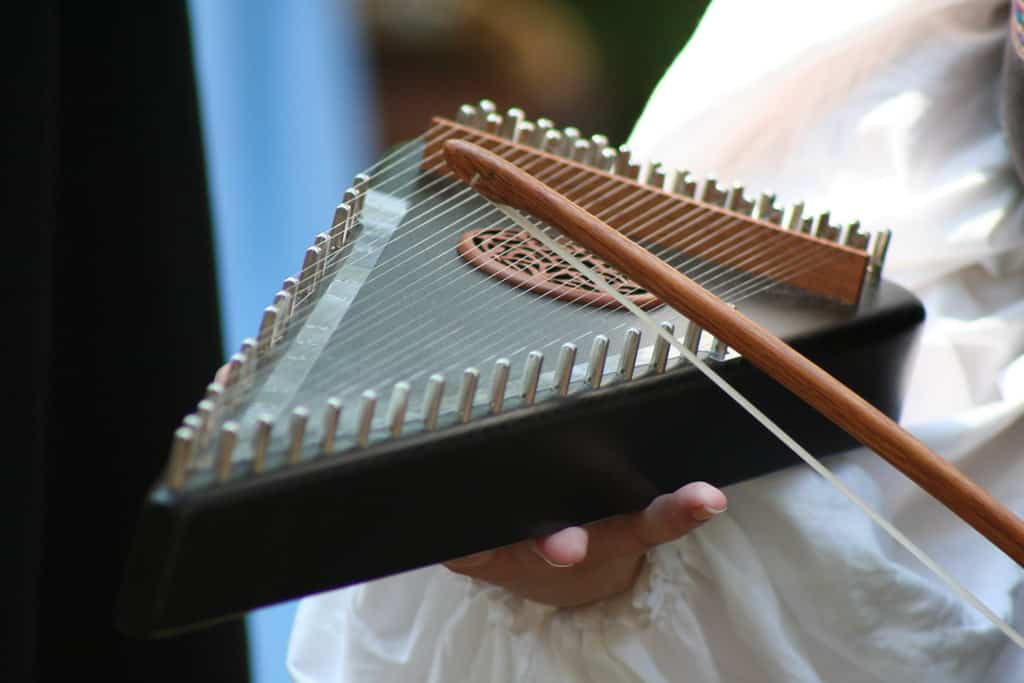Keeping your psaltery in tune is important to get the best possible sound from it. It’s vital that you know how to tune your psaltery – and luckily, it’s actually an incredibly easy instrument to tune! Today, we’ll be looking at how to tune your psaltery to get the best possible sound from it.
Why Your Psaltery Needs Tuning
It’s important to understand why your psaltery might need tuning. Over time, the strings of your instrument can get looser. The psaltery’s body can potentially warp as well, either due to age or temperature/humidity changes. These factors can impact the quality of sound. You should always make sure that you’ve given your psaltery a little TLC to keep it playing beautiful tunes, no matter how much time passes by.
Top Tips to Tune a Psaltery

Tuning your psaltery doesn’t have to be difficult. The easiest way to tune is with help from a piano. If you don’t have a piano, check out this free online piano website.
Middle C on a piano should be about an octave lower than the fourth longest string on the right of your psaltery. The G above middle C on your piano should accurately correspond to the longest psaltery string on your instrument. By comparing the sound made by a piano with your psaltery, you’ll find it easier to make sure you’ve tuned your psaltery properly.
It’s also important that the right-hand side of the psaltery corresponds with the white keys on the piano. Similarly, the black keys on the piano will be similar to the left-hand side of your psaltery strings.
How to Tune a Psaltery
Now that you know how to check whether you’ve tuned your psaltery properly with help from a piano, you’re probably still wondering – how do I tune my psaltery? Luckily, this process is incredibly simple.
First, choose the string you want to tune and find the corresponding wrest pin at the base of the string. Using a tuning key, you’ll want to gently turn the wrest pin. Don’t do so aggressively, as most psalteries will only need a small amount of tweaking to perfectly tune it. This is especially the case for short strings, which need less tweaking to alter their sound than the psaltery’s longer strings.
You’ll need to decide which way to turn the wrest pin; this depends on whether you want to raise or lower the pitch. The wrest pin should be turned slowly either clockwise or anti clockwise, respectively.
Final Thoughts
Your psaltery can only perform at its very best if it’s given the care and TLC it needs. Luckily, though, tuning your psaltery is easy to accomplish and ensures that you get the best sound possible from your instrument. By checking the sound against a piano, you can get highly effective tuning that allows you to get the most out of every song you play.
Don’t leave the performance of your psaltery to chance; tune it up today to make sure it’s creating the exceptional music you expect.
Read More >>> Build a Psaltery




